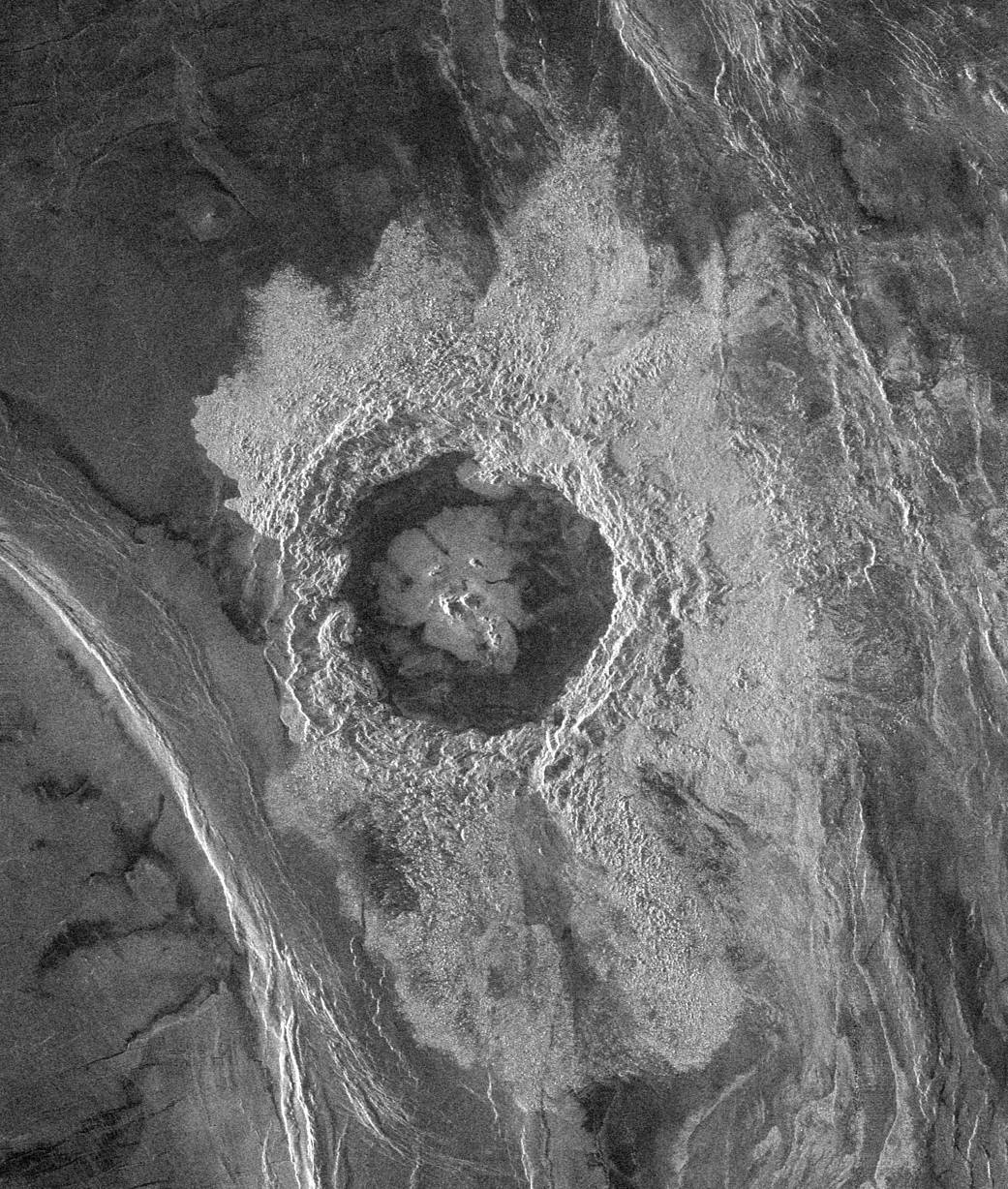This November 1996 image from Magellan shows Dickinson, an impact crater in the northeastern Atalanta region of Venus. The image is approximately 115 miles (185 kilometers) wide at the base and 43 miles (69 kilometers) in diameter. The crater is complex, characterized by a partial central ring and a floor flooded by radar-dark and radar-bright materials. Hummocky, rough-textured ejecta extend all around the crater, except to the west. The lack of ejecta to the west may indicate that the impactor that produced the crater was an oblique impact from the west. Extensive radar-bright flows that emanate from the crater’s eastern walls may represent large volumes of impact melt, or they may be the result of volcanic material released from the subsurface during the cratering event.
Magellan was the first planetary spacecraft launched from a space shuttle. Now the agency is planning an even more adventurous mission–DAVINCI, which will be the first mission to study Venus using both spacecraft flybys and a descent probe.
Image Credit: NASA/JPL-Caltech
这张麦哲伦于1996年11月拍摄的照片显示了狄金森陨石坑,它位于金星亚特兰大地区东北部。这张照片底部宽约115英里(185公里),直径43英里(69公里)。这个陨石坑很复杂,其特征是有一个部分的中心环和一个被雷达黑暗和雷达明亮材料淹没的地面。除了向西外,坑坑洼洼、粗糙的喷出物遍布陨石坑周围。西面没有喷出物可能表明,形成陨石坑的撞击物是来自西面的斜向撞击。从陨石坑东壁发出的大量雷达般明亮流可能代表着大量的撞击熔体,或者它们可能是陨石坑活动期间地下火山物质释放的结果。
麦哲伦是第一个从航天飞机上发射的行星航天器。现在,NASA正在计划一项更具冒险性的任务——达芬奇,这将是第一个同时使用航天器飞越和降落探测器来研究金星的任务。
影像来源:NASA/JPL-Caltech







